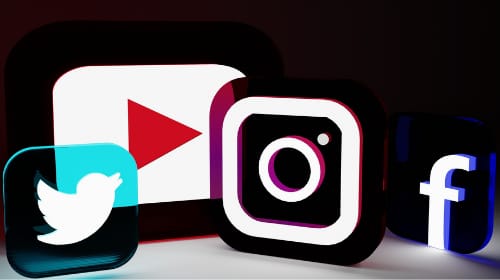2020 was unexpected, to say the least. Many companies shifted to remote work and the market research industry adapted so it could continue to deliver valuable insight. What will 2021 look like? Here are some thoughts on next year’s market research trends.

Related: How to Do Market Research Post-Pandemic
2020 Research Roundup
Looking back at our 2020 industry trend predictions, we were — somewhat surprisingly — right. No one could have predicted a global pandemic would throw a wrench in the mix, but here’s how the market research industry adapted.
The Switch to Mobile
We originally predicted a key trend towards mobile-friendly surveys. If anything, the pandemic prompted this shift to accelerate, as many pollsters switched to mobile-friendly methods to execute short surveys to respondents. This survey change will be here to stay. Researchers have already proven that respondent attention is decreasing, and the ability to quickly deliver insight is becoming progressively necessary. The need to collect information at various touchpoints across the customer journey has also grown during the pandemic. The expanded need to fill in information gaps during the sales process will generate growth in data collection.
Artificial Intelligence’s Role
It’s no surprise that we predicted AI in market research will begin to play a larger role in how we collect, analyze and utilize information. AI tech is becoming more widely used across all industries. Covid-19 increased the amount of information available to companies. Consequently, the need to generate valuable insight from new data became even more important. Numerous new tools are entering the market to enable a researcher to comb through open-text data, analyze and sort information and visualize key findings.
A Surge in Qualitative Research
We also predicted that there would be a shift towards qualitative research. That may have been marred in the traditional sense, but our assumption had been that people would want to move towards newer, cheaper methods such as online focus groups and online communities. Given that traditional focus groups have been unsafe to conduct during the pandemic, there was an increase in these virtual alternatives for conducting research.
The Non-Traditional Data Mix
In addition to qualitative research, we predicted a combined use of various forms of data to generate consumer insight. The data surge from Covid-19 cemented the value of mixed-mode research. Companies that were adept and able to pivot their processes during the pandemic were able to do so because they had the information and tools ready to execute.

Related: 4 Easy Tips to Up-Level Your Thought Leadership with Market Research
What This Means For Market Research Trends in 2021
We plan to see a resurgence of brand tracking studies. Some researchers predicted the death of the tracker a few years ago. Although some companies have discontinued continuous trackers, we predict brand metrics will become increasingly important to companies again.
The world has rapidly changed — consumer behavior along with it. Brands will need to keep a pulse on if consumers are aware of new ways to make purchases and if people value these changes. In a world where you can order anything with a click of a button, it’s crucial to maintain customer retention and ensure they are satisfied.
Get the Full Picture with Research & Analytics
Research and analytics are becoming more and more intertwined. Combining the information from these two areas creates a bigger picture for brands. This can be done in several ways including social listening, media measurement, influencer tracking, web analytics and site optimization. I will briefly touch expand on each of these below.
Social Listening
Social listening is a way for companies to track the sentiments and conversations people are having about their brand. It can help a company understand pain points consumers may be experiencing, misperceptions about the brand, and different factors driving consumers to purchase. This information can be analyzed and provide guidance or indicators for brands as to how their consumers are feeling about their brand.
Media Measurement
Media measurement is a scale for a brand’s visibility and highlights how much a brand dominates the conversation in their industry. The greater market share a brand has, the greater popularity and authority the company will generally have among current and potential customers. Media measurement also works to provide insight on popular industry topics, the types of publications discussing those topics, and which brands are speaking in these areas to establish themselves as thought leaders. It can be a useful tool for a company to understand whether its media strategy is working. When combined with traditional brand research, it can measure the impact of its efforts to improve awareness and perception.
Web Analytics
Web analytics are useful for a brand trying to understand how it is reaching customers and how it can reach new audiences. It can provide useful information on where a company should spend money to advertise and optimize its efforts. A well-designed and optimized website will provide an easy experience to a current or potential customer and generates better outcomes for the stakeholder.
All these efforts ensure that a brand is listening and engaging with its customers to drive business. If a company is ignoring any of these types of research, it may miss opportunities for conversions and eventually stumble when it fails to recognize the shift in consumers’ wants and needs.
Closing Thoughts
Data is more important now than ever; but, it is not enough to just collect the information. Companies need to know how to use data and translate it into valuable insights. Research helps provide answers to guide companies in next steps. 2020 was not the year we expected, but it brought about exciting changes across all industries. 2021 is going to continue to shape how brands & consumers interact across channels and I’m excited to see what’s next!
Discover more of our 2021 predictions for the biggest trends in marketing:
- 2021 Trends: Design
- 2021 Trends: Digital Marketing
- 2021 Trends: Social Media
- 2021 Trends: Communications
- 2021 Trends: Marketing & PR
Looking to add market research to your strategy? Get in touch today!



